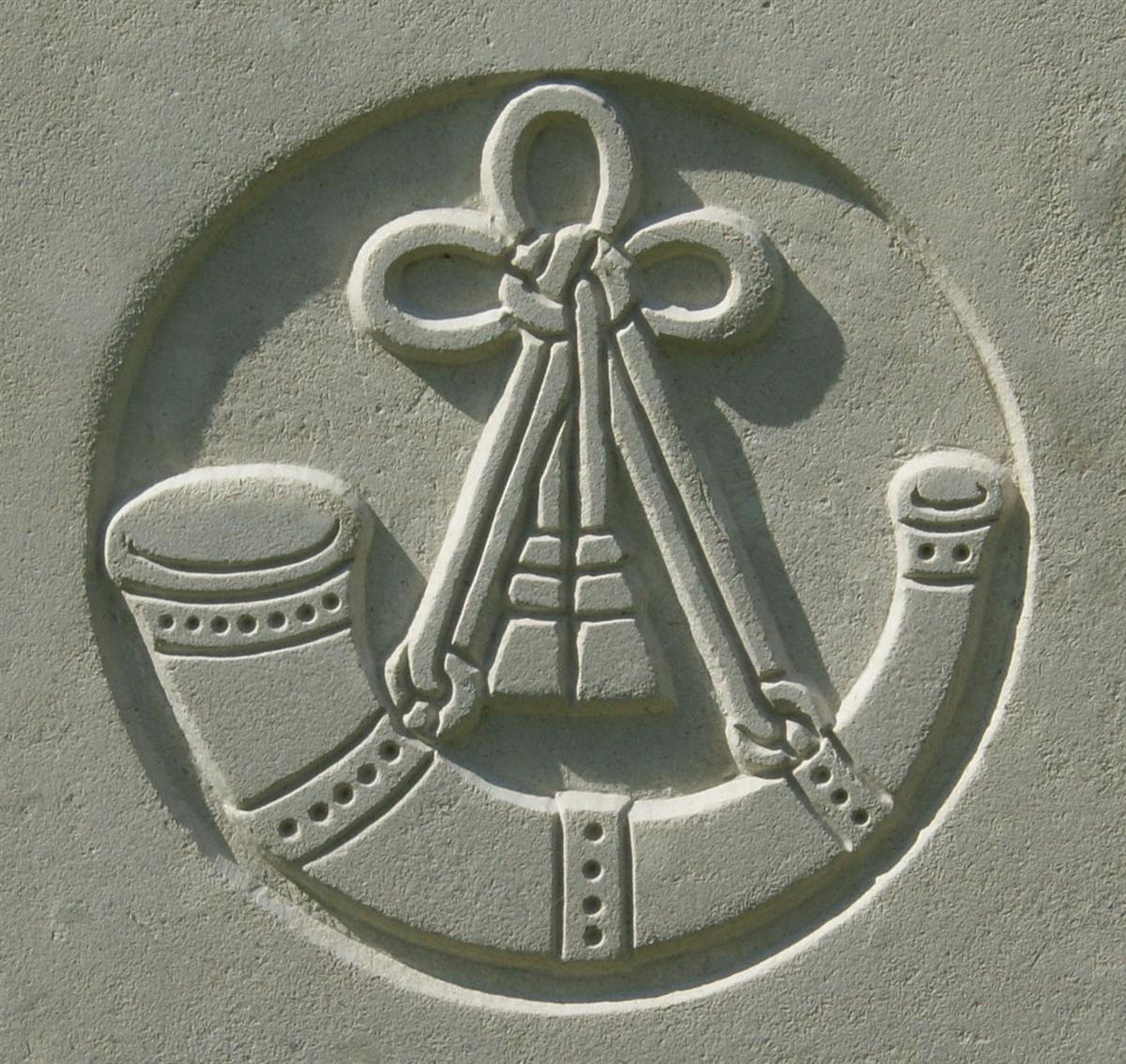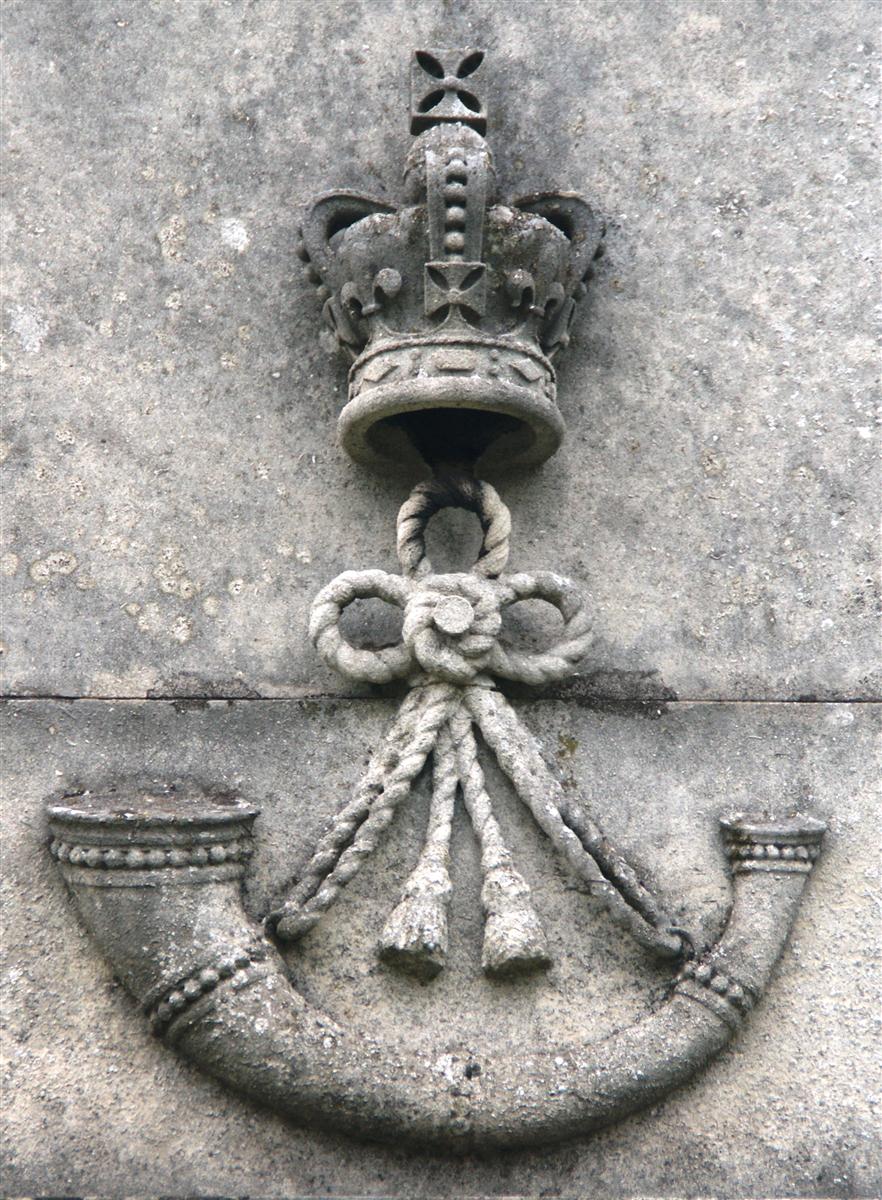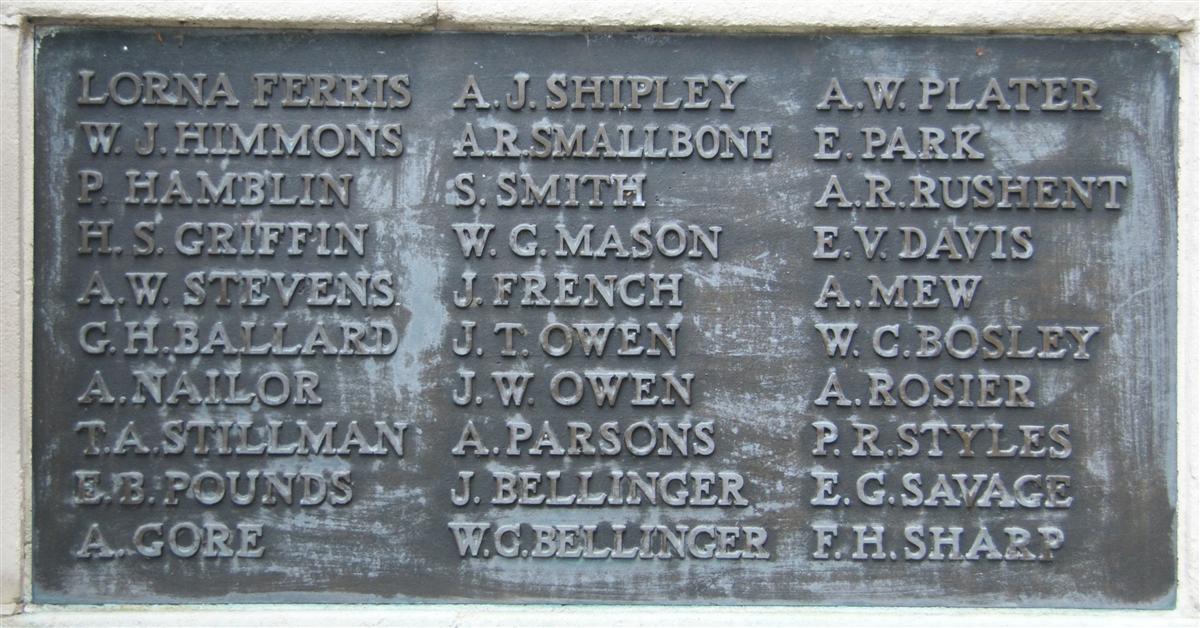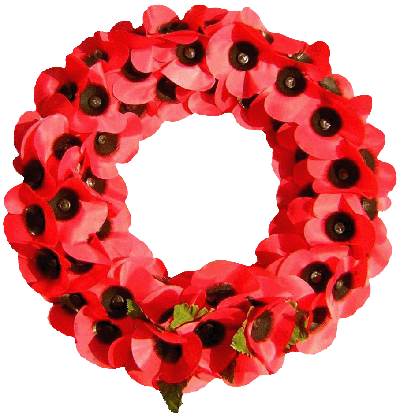William George Mason
Private 7286 William George Mason, 2nd Battalion, Oxfordshire and Buckinghamshire Light Infantry
George, was born in 1883 the son of Henry Mason and his wife Rhoda née Rushent. He was the fourth child of at least eight, and also the fourth son after Harry Reginald (born 1877), Frederick James (1880) and William George (1883). His birth was followed in the ensuing years by Gertrude Elizabeth (1886), Edith Agnes (1889), Rhoda Ann (1891) and Walther John (1893). Sadly Rhoda Ann died in infancy, before her first birthday.
Harry worked in Newbury as a coal heaver, hard physical labour, which may have contributed to his death in 1897 at the relatively early age of 49. Rhoda took in washing to earn a living, but life was not as hard for her as it might have been had Harry died a few years older because the elder sons were of working age and were able to contribute to the family budget. By 1901 two of her sons had left home, Harry to work as a coachman in Shiplake and Bert, who had enlisted into the Royal Berkshire Regiment on 6 December 1899.
George was the next to leave; following the Bert’s example he joined the army, but not the local regiment, instead he joined the Oxfordshire and Buckinghamshire Light Infantry (Ox & Bucks), His regimental number was issued in late 1902 / early 1903. After seven years in uniform he returned to civilian life while remaining a soldier, serving in the Reserve for another five years. He found work as a house painter and a wife, Elizabeth Harriet Sturgess, who he married in 1910. The newly-weds set up house at 6 Denmark Road, Newbury.

The regimental badge of the Ox & Bucks Light Infantry, as used on CWGC headstones. |
In the spring of 1915 the French realised that the Germans had moved many units from the Western Front to the east, with the aim of forcing the Russians to admit defeat so that Germany would only have to fight on one front. Considering that this meant that the German forces facing the Allies in the west were weakened and vulnerable. So General Joffre, commander of the French forces planned an offensive (the 2nd Battle of Artois) with the aim of breaking through the German front and disrupting their supply lines by capturing key railway lines.
Joffre appealed to Sir John French for British support which led to British/Indian offensives: first the Battle of Aubers Ridge and then the Battle of Festubert; neither had any significant success. It was as part of the latter that the 2nd Ox & Bucks took part as support to the 2nd Battalion, Royal Inniskilling Fusiliers:
War Diary, 15-16 May 1915, 2nd Battalion, Oxfordshire & Buckinghamshire Light Infantry
All the German trenches opposite out line had been very accurately and slowly shelled during the past three days. At 11.30pm an attack by the following troops took place. On right 6th Inf Brigade, in center 5th Inf Brigade, on left MEERUT division. This took place on a front approximately from R1 through V1 to V6 (ILLIES map 1/10,000). The 5th Inf Brigade were formed as follows: on right 2/R Inniskilling Fus supported by 2/Ox & Bucks L Infty; on left 2/Worcestershire Regt supported by the Glasgow Highlanders. The 2/HLI were in reserve.
The attack by 6th Brigade and half our R front was successful, the German 1st Line and in most cases their 2nd line trenches being occupied, but on the left eastwards it did not succeeed. Each of the supporting Bns supplied 3 platoons as working parties carrying sandbags and shovels to the leading battalions.

The Ox & Bucks Light Infantry badge on the memorial erected in Oxford to the memory of the men who fought with the regiment in the Great War. |
A bombing party under 2nd Lieut KITE successfully defended our extreme left flank. Regl Hd Qrs moved about 7am to captured German line. The line occupied was about 120 yards in length, a second fire trench having been made on our side of original German parapet.
No counter attack was anywhere on our line made by the enemy. The 7th Division about one mile to right of 6th Bde mad a successful attack at 3.15am and were able to advance over at least 2 lines of trenches. The Regt was relieved about 1am on 17th by the 2/HLI and returned into our original breastwork lines.
The reference to ‘breastwork lines’ indicates the terrain these battles were fought in – low, reclaimed marshland; it was impossible to dig trenches as the water table was only inches below ground level. Instead the Allies constructed breastworks above ground to offer cover from enemy rifle and machine gun fire. The German positions were on higher ground – the mention of a parapet shows that they were able to dig trenches.
The following day the British line held by the battalion was subjected to heavy shelling, resulting in many more casualties. In total the battalion suffered 395 casualties over the three days, including 64 who were recorded as ‘missing’. George was among those whose fate was unknown – his family was left to hope that his name would appear in one of the Red Cross lists of prisoners of war. Then, in November, they got the same news about Bert:
Newbury Weekly News, 11 November 1915 – Missing
MASON – Private R Mason, 5734. 1st Royal Berks, attached 170th Co, RE, third son of Mrs Mason, South View-cottages, Northcroft-lane. Missing since Sept 28th.
Also Private W G Mason, 7286 Oxford and Bucks LI, fourth son of above. Missing since May 16th – Any information would be thankfully received by their mother.
Like his parents, the War Office too were waiting for news from the Red Cross; eventually the lack of news led them to the inevitable conclusion and they notified the family that George was assumed to have been killed in action of 16 May.
To mark the anniversary of George’s death his sister Gertrude place a notice in the paper:
Newbury Weekly News, 18 May 1916 – In Memoriam
In fond and proud memory of Pte W George Mason, Oxon and Bucks Light Infantry, fourth son of Rhoda and the late Henry Mason, Northcroft, Newbury, who gave his life May 16th, 1915, for Honour, King, and Country, aged 31 years.
To every man upon this earth,
Death cometh soon or late;
And how can man die better.Gertie.
As his body was never recovered his name is remembered on panel 26 of the memorial to the missing at Le Touret.

George's name on Newbury War Memorial (middle column) |
Locally he is remembered on tablet 1 of the Newbury Town War Memorial; unusually he is not on the same tablet as his brother Bert.
The names on the memorial were placed by lot, meaning that they are randomly distributed, but exceptions to this were made in the case of brothers, who are usually listed together. George and Bert are an instance where this did not happen; presumably those determining the distribution were unaware that they were related.
Both brothers are also remembered on the memorial board and roll of honour in St Nicolas, Church, Newbury.
For Bert’s story click here.

Find a memorial :
| Died this day: | |
| 29 November 1918 | |
| Richard Sutton | |
| Kintbury |

Like this site? Show your appreciation through a donation to a great charity.